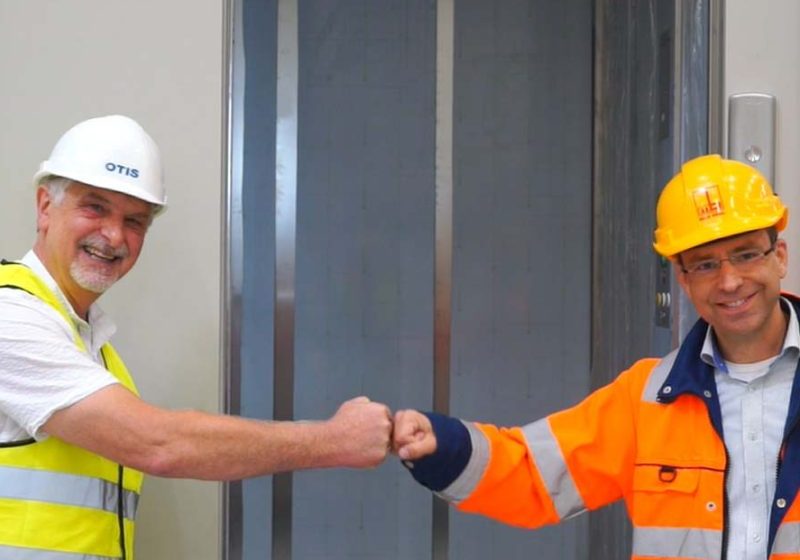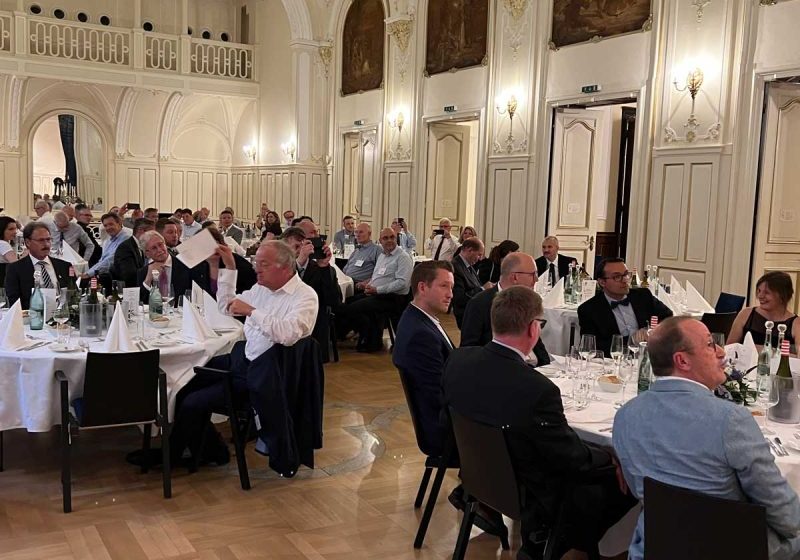People, technology and general conditions are explored in depth.
After a two-year hiatus due to the pandemic, more than 100 participants returned to the Schwelm Symposium, presented by Henning GmbH & Co. KG, on June 13-14 at company headquarters in Schwelm, Germany. Plenty of long breaks offered a much sought-after opportunity for personal exchange, in addition to plenty of technical information. In the accompanying exhibition, 10 companies presented their products and services.
Event opening and moderation were handled by Wolfram Vogel, Vogel Gutachten (Assessor), on the first day, and Volker Lenzner for event co-sponsor, the German medium-sized companies’ industry association VFA-Interlift, on the second day. The previous evening, many gathered for dinner at Golfhotel Vesper in Sprockhövel, Germany, at the invitation of Sicor Srl. The event’s two days were linked by a barbecue evening.
Four topics were explored:
- The elevator as a system: how people perceive, plan, realize and use it
- Digitization of the elevator and its surroundings
- Current standards and laws
- New technical solutions
In a total of 20 presentations, a great deal of knowledge was shared, and some was also called into question during lectures and discussions.
The Big Picture: Elevators-Buildings-People
Three speakers dealt with elevator systems and the people behind them. Vogel gave a presentation titled, “Thinking and Acting in the Elevator Construction System.” Communication topics in elevators include urbanization, demographic development, internationalization, sustainability (including energy efficiency), climate neutrality and lightweight construction, as well as smart applications and AI. The central topic is and remains passenger and employee safety. Vogel used the example of suspension means and its technical development to illustrate these communication topics from the point of view of the importance of elevator components. People must accept necessary developments. Habitual structures and simple activities fall away and new structures must be established. Winners and losers will be regrouped.
In addition to humans, AI will come into play. As yet, machines are taking over only individual tasks from humans. Humans and computers are both becoming more intelligent. But, at some point, the machine will be superior to humans, some believe. The wishful thinking of futurologists is that humans and computers will have a parallel learning curve. What must people do to grow? Vogel listed:
- Prepare themselves.
- Change processes.
- Educate themselves and receive training.
- Earn qualifications.
- Stay motivated.
- Consider different perspectives.
- Attract employees.
- Network.
- Enforce social acceptance.
- Enable digital transformation.
Vogel also looked at the elevator from the perspective of climate change, with the subsequent question: “How do we want to live?” His answer: “increasingly in a city that is densely built up.” Climate change also impacts elevator components. Resource consumption by construction is currently 50-60% worldwide. Cement production is responsible for 5% of global CO2 emissions. If urbanization and the transformation of living areas continue in this way, lightweight construction with other materials and structures will become mandatory in elevators.
Lenzner, VFA-Interlift, emphasized the importance of training in his presentation “Countering the Shortage of Skilled Workers — Compact Training to Become an Elevator Fitter.” Since there is no longer any education in Germany for specialist jobs in the industry, lateral entrants with training predominate. He presented the offers of the VFA Academy in detail: vfa-interlift.de/vfa/aktivitaeten-und-angebote/vfa-akademie.html. New is elevator fitter training with high practical portions in the training center Menteroda of the THOR academy and its related enterprises. In European Union countries, hardly any structured training standards exist. Germany follows VDI 2168; courses are already available in the U.K. and Poland. ELA is working on an expansion in Europe.
A special aspect was highlighted by your author in her presentation, “WoLIE Women in the Lift Industry in Europe — Status and Perspectives.” An estimated 15% of those active in the elevator industry in Europe are female. Fourteen percent of women have a STEM (science, technology, engineering and math) degree, but 39% of men do. There is also a minority of females in management: approximately 34% in Germany, in notable contrast to, for example, medical technical assistants, who are 99% women.
Bringing more women into the profession and into better-paying jobs is desired by the industry. Politically, the goal is supported, among other things, by kindergartens and grade schools, as well as quotas and stricter laws, e.g., on sexual harassment, which around one third of women have experienced in the workplace. A few companies in the elevator industry are getting involved by participating in Girls Day + Boys Day, home office/mobile work and/or personnel development measures specifically for women, among other things. Specific reports and requests from women in the elevator industry rounded off the presentation. Further information on the WoLIE Initiative can be found at wolie.eu.
Digitalization Everywhere, Including in the Elevator
Wolfgang Seufert, DB Station & Service AG, contributed a view on digitalization: “Smart Technologies on the Elevator — Expectations and a Report from a Nationwide Elevator Operator.” Exclaiming, “There’s nothing that doesn’t exist at Deutsche Bahn,” he described the 2,500 elevators and 1,000 escalators from 60 manufacturers over 60 years of construction that serve the railway system. Their operation is monitored by ADAM, DB’s internal IT solution for recording online the availability of customer-relevant conveyors. This availability — currently 97% — controls the in-house service provider, but costs are rising and conditions are deteriorating.
The goals are: High availability, reduction in the number of failures and a focus on condition-based maintenance. The aim is to detect failures before they occur so units can be repaired in the evenings without customers noticing. For this purpose, IoT sensor technology is used to collect and evaluate data and, in turn, detect potential failures.
The sensor system:
- Enables online comparison of the performance of service providers and manufacturers and thus, condition-based repair and service
- Automates process flows for predictive action
- Creates transparency for secondary monitoring
- Creates conditions for process optimization
Predictive messages will be provided non-invasively and invasively in the future. Essential indicators of elevators include number of rides, floor-arrival and door-opening times and ride quality. For escalators, they include determining circulation in meters, and if the gearbox lacks oil and the brakes are worn. In the future, robust systems, as well as an evaluation of individual components, are desired to reduce dependence on sensor technology.
Tim Ebeling, Henning, switched over to the suppliers’ side with his presentation “Elevator 4.0 — Opportunity and Risk for SMEs — Where Do We Stand and Where Do We Want to Go?” For five years, there have been “tender” beginnings with new products from small and medium-sized enterprises (SMEs), but nothing has been broadly adopted and little has been seen in terms of new business models. Instead, much is coming from the Big 4 and so-called disrupters from other industries. The company Aufzugshelden (Elevator Heroes) offers its service to operators on the Internet: “You don’t have to worry about anything anymore!” If a big player does that, and operators believe it, the market is lost for SMEs.
Digital solutions will dominate communication between stakeholders with many players and many bilateral contacts. Progress is still slow because there are no unified interfaces/standards. First approaches to standardization can be found in Singapore. ISO 8102-20/IEC 62443 Cybersecurity also defines mutual requirements and conditions between product supplier plus system integrator plus asset owner.
End customers want one elevator and one cloud containing all data, including for all components. Access for SMEs to this single cloud is made possible by CANopen, for example, but this has hardly been used up until now. To approach the topic in a structured and organized way, a company needs to put money in the hat, and, at the same time, everyone has to put their individual solutions on hold. Ebeling asks SMEs if a joint solution is needed, understood to needed and desired.
In his view, there will be no national solution, but at least a European solution. Groups are already trying to define the bits and bytes, but he is clearly in favor of standardization. This is not about opening one’s own system, but about defining the application programming interface (API). Each manufacturer will keep its cloud, but communication via API among companies must be functional.
Ludwig von Busse, Simplifa, offered a practical digital solution in “The Digital Checkbook.” Operators often don’t know how many and which elevators they have. They also know that they must do something to the elevator, but not exactly what or how much it will cost. Digital methods can be used to create transparency. For this purpose, the following services are offered by his company:
- Analysis plus Reporting plus Planning
- Monitoring plus Sensors
- Walk-through Elevators plus 360 Degree Visualization
- Document Digitization
- Onboarding
His vision is to offer predictive maintenance in the future together with a partner, if necessary, but this path entails demand-based service. He gave a live online demonstration afterward of how the software independently recognizes data on a verification certificate or invoices, for example. The software checks required documents and provides a list of shortfalls. In addition, it offers a portfolio evaluation with a presentation of the current status of equipment with all technical data, taking into account components, IoT data and economic data. Access to all documents, such as contracts or service/inspection reports up to the determination of investment requirements for identified shortfalls or deficiencies, e.g., emergency lighting being unavailable, is also included. If desired, his service provides the tenders for the realization of a project.
Technical Rules and Legal Regulations as Guidance for Planning and Realizing Elevator Systems
Under this heading, nine speeches were held over the two days. Franz Watzke, FW Lift-Tech Consulting, presented, “News from the World of Standards and Codes.” From Europe, he reported that the Machinery Directive is currently being revised. For CEN standards, he reported that EN 81-21, -28, -58, -71, -77 are undergoing editorial changes and corresponding adjustments in Annex ZA. CEN publication will be by early June, nationally, then by the end of December 2022, with transition periods until 2024.
EN 81-70 will arrive in July 2022 with an amendment A1 on luminance contrast between adjacent surfaces. He reported on ongoing projects EN 81-76 Evacuation Elevator and EN 81-82 Increasing Accessibility, among others.
One focus was on the upcoming conversion of EN 81-20/-50 into an International Organization for Standardization (ISO) standard. There will be some changes. These regard new suspension means, traction sheave elevators with reduced nominal load, requirements for machine brakes, automatic rescue system, vertical sliding doors, hydraulic brake discharge and inspection travel beyond terminal stops. The draft schedule is expected in late 2022. Some ISO standards from this 810x-xx series are already in place. Part 20 Cybersecurity is expected to be released by the end of 2022.
Regarding the National Act on Systems Requiring Monitoring (Überwachungsbedürftige Anlagen, ÜAnlG), he noted that it has been in force for almost a year and, to date, has not set any noticeable examples. Technical Rules for Operational Safety (TRBS) 1201-1 Inspection of Systems in Potentially Explosive Atmospheres and TRBS 1203 Persons Qualified for Inspection were published in May 2021. TRBS 3121 Operation of Elevator Systems includes an adaptation of the elevator/building interface. VDI 2552 Part 11.5 BIM Standards Elevators had been set to be published in mid-2022. A Part 11.6 for escalators and moving walks will most likely follow.
Horst Schickor, SBR Aufzugstechnik (elevator technology), questioned the creation and constant change of standards in general under the title “New Company, Same Old Suffering — Are We Going to Regulate Ourselves to Death?” The elevator industry has benefited from the pandemic, as people have had time and money to optimize their homes. But, as a result, supply chains have also collapsed. Delivery times are as long as 36 months. The war in Ukraine is only a two-hour flight from Germany. What if the Russians shut off the gas tap? What impact will the next winter have on industry and employment? If we run out of material, how do we deal with it? In his view, that plays a bigger role than the “luxury problem” of standards and competition regulations.
The 10 Commandments have 279 words, with no interpretation problems or questions. Almost everyone has been acting on them for thousands of years. The Industrial Safety Ordinance (Betriebssicherheitsverordnung) of 2015 has 25,527 words, plus definitions that are still being debated. Currently, EN 81-20 has 275 pages, plus many more standards in this family. At present, the transition to an ISO is taking place. His conclusion: “It is not getting easier!”
Anna Kuenzel, TÜV SÜD (South) Industrie (Industry) Service, reported on “TRBS 1115 on Functional Safety and EmpfBS 1115 on Cyber Security.” TRBS 1115 provides definition, suitability, conditions of use, safe use, extension of requirements for safe operation, EU directives and ordinances and state of the art.
Good planning ensures functional safety (Funktionssicherheit FuSi). The safety life cycle (SLC) is composed of:
- Concept
- Planning
- Realization
- Function test
- Operation and maintenance
- Decommissioning
The FSM management of FuSi includes: Roles and responsibilities (knowledge management), work processes and instructions (SLC), verification, validation (QM and quality assurance), control of functionality (supply chain management), ensuring the application of FSM and documentation and archiving (audit).
Until now, we have been protecting people from machines. Now, we are protecting the machine from humans. According to EmpfBS 1115, protective measures in the event of cyberattacks include considerations about roles, rights, effective authentication procedures, hardening of components, management of data, independence, regular review and adjustment.
Thomas Lipphardt, KONE, dealt with “Emergency Call Management: the New VDI 4705.” It is estimated that 80,000 elevators in Germany still operate without an emergency call system. Getting stuck is expected. The instruction in the elevator on how to proceed in such a case is often effectless, as children and one-seventh of Germans who speak a foreign language cannot read it. About 120 trapped people in Germany tear down the ceiling in the elevator every year to look for a non-existent hatch, because they remember it from American movies. The longest entrapment in Germany lasted 10 days; the person died. In Tokyo, Japan, water and toilets must be kept in elevators because 17,000 trapped people cannot be freed in a short time after earthquakes.
The VDI Standard includes emergency call management planning for technical and organizational handling of emergency calls from people trapped in elevators. It is aimed at employers/operators, principals, architects, specialist planners, testing organizations, installation/maintenance companies and emergency services providers. The green print was published in spring 2022; objections are still possible. Lipphardt went through the process of an elevator becoming stuck, step by step, illustrated by a graphic in line with the VDI Standard.
Jan Koenig, Ing4Lifts Ingenieurbüro (Engineering office), spoke on “Smoke Drain and Ventilation of Elevators (VDI 6211).” Shaft smoke drain has not yet been regulated by European and international standards, but there is a lot of information on the market, some of which is contradictory. VDI 6211 supports, among others, EN 81-20, in which statements can be found, as well as other regulations, by collecting them and providing guidance on implementation. The green print had been set to be published in July 2022 with an objection period of four months. Other reasons given in favor of the VDI Standard were:
- Energy efficiency
- Tightness of buildings
- Differentiation ventilation and smoke drain requirement ventilation
Objectives of the technical rule include interaction of systems, functional and safe creation of the elevator system, information, and recommendations for dimensioning. The contents include, among others:
- Compliance with the requirements of the Product Safety Act (Produktsicherheitsgesetz)
- Industrial Safety Ordinance (Betriebssicherheitsverordnung BetrSichV), and national building legislation
- Ventilation of the elevator system, including, among other things, power failure or shutdown, as well as expectation of entrapment
- Interfaces with other crafts, such as building automation and fire alarm systems
- Installation, maintenance and documentation
- Initial and periodic inspection
- Annexes: CO2 concentration in the elevator car calculation examples and substance quantity balances of the elevator car
Tobias Brendel, Ingenieurbüro (engineering office) Brendel, dealt in detail with “Risk Assessments — Compulsory and Voluntary Parts.” The elevator is a work tool. Only 5% of accidents are technical failures; the rest are due to human error. The basis is the BetrSichV 2015 §3 risk assessment (Gefährdungsbeurteilung GBU). The basis of a GBU is DIN EN 81-80: 2019. In practice, GBUs should have been made since 2003, but to date, there is no current GBU in an estimated 100,000 and more installations. In addition, many GBUs contain inaccurate risk assessments. There may be changes due to systems requiring monitoring (Gesetz über überwachungsbedürftige Anlagen, ÜAnlG). New risks are also constantly emerging as a result of new technology, e.g., retrofitting of disinfection equipment in the elevator car, which necessitates a regular review of the GBU.
“The Influence of Natural Oscillations of Elevator Shaft Walls on the Permissible Structure-Borne Sound Level According to DIN 8989 Table 3” was the topic of Ulrich Nees, Aufzug — Systeme —Beratung (Elevator – Systems – Consulting). He reported on issues with the standard. At present, steel parts from the Ukraine are missing, so the reinforcements within walls are being moved to other positions. As a result, up to 3 dB more are measured.
He sees further issues with the concrete elevator shaft. When the elevator is stopped, the shaft already has a relatively large natural oscillation. If the elevator is moving, it increases, and often exceeds, the DIN specification of 75-70 dB at specified frequencies. As an investigation method, he lists:
- Armoring location with an image-based search system
- An elevator shaft wall with a 1 cm concrete cover is not sufficient; proper concrete cover is to be achieved by using spacers
- Testing of sound transmission with dodecahedron loudspeaker
- Application of the impact echo method for non-destructive testing of concrete walls
- Measurement of the perpendicular deviation of the car over the transport height in case of inadequate oscillation insulation
Gerhard Quanz, Regional Commission (Regierungspräsidium) Kassel, presented “The New Market Surveillance Act” and asked the question “Where have the elevators gone?” The new Market Surveillance and Safeguarding of Products Act (Gesetz zur Marktüberwachung und Sicherstellung von Produkten, MüG) came into force on July 16, 2021, and does not implement EU harmonization legislation into national law. The act applies to elevators and safety components according to three European and national laws and ordinances. The MüG contains definitions of exhibiting; exhibitor; commercial actor, e.g., fitting company; and remote sales. Responsibilities and powers lie with various state and federal authorities. The MüG obligates commercial actors to cooperate with market surveillance authorities. The powers of these authorities include measures against any commercial actor and exhibitor, such as taking samples; visits and testing, also in seaports; and collection and analysis of publicly accessible information. Market surveillance measures come into play for products provided online and offline in the form of corrective actions and verification of the characteristics of products through random sampling, laboratory testing or market surveillance. His conclusion: “It’s really a mess!”
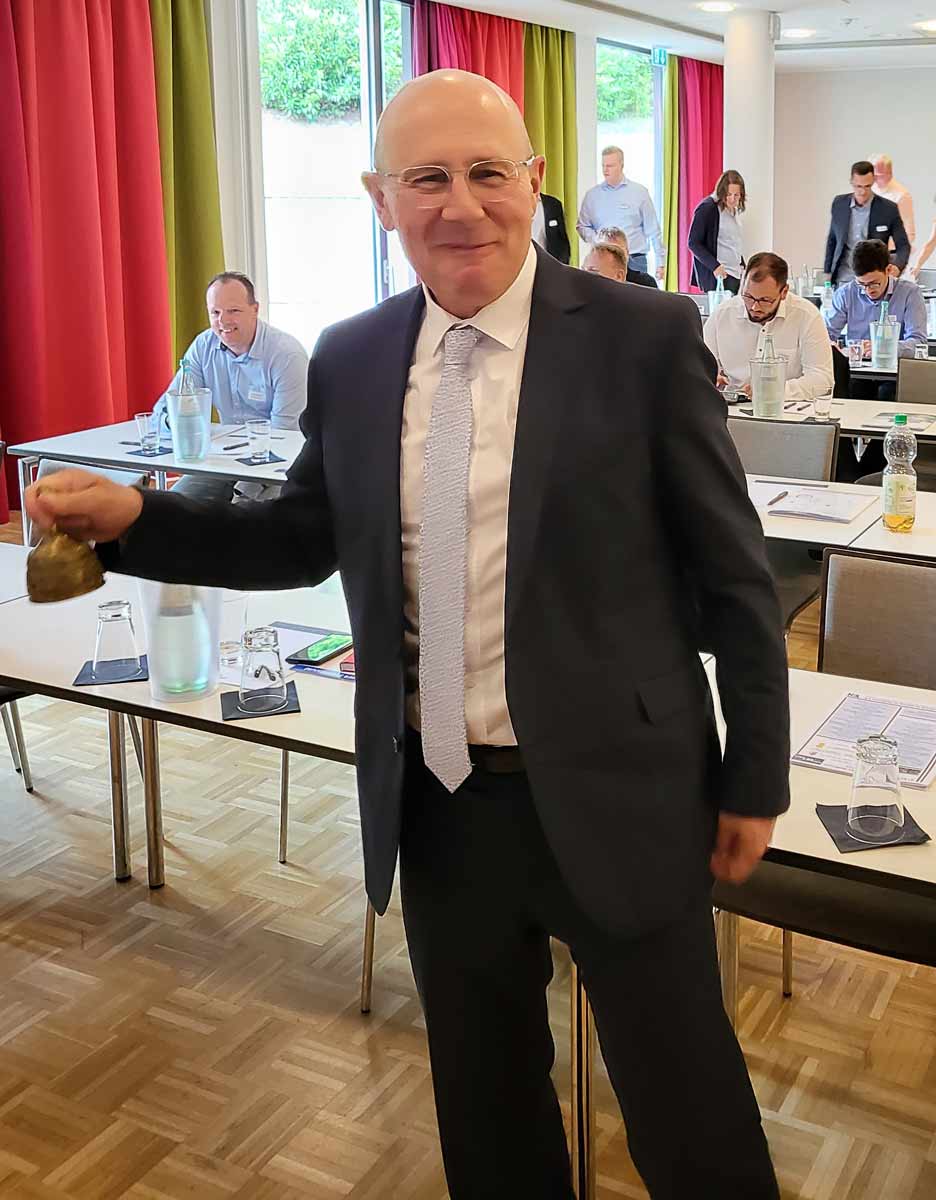
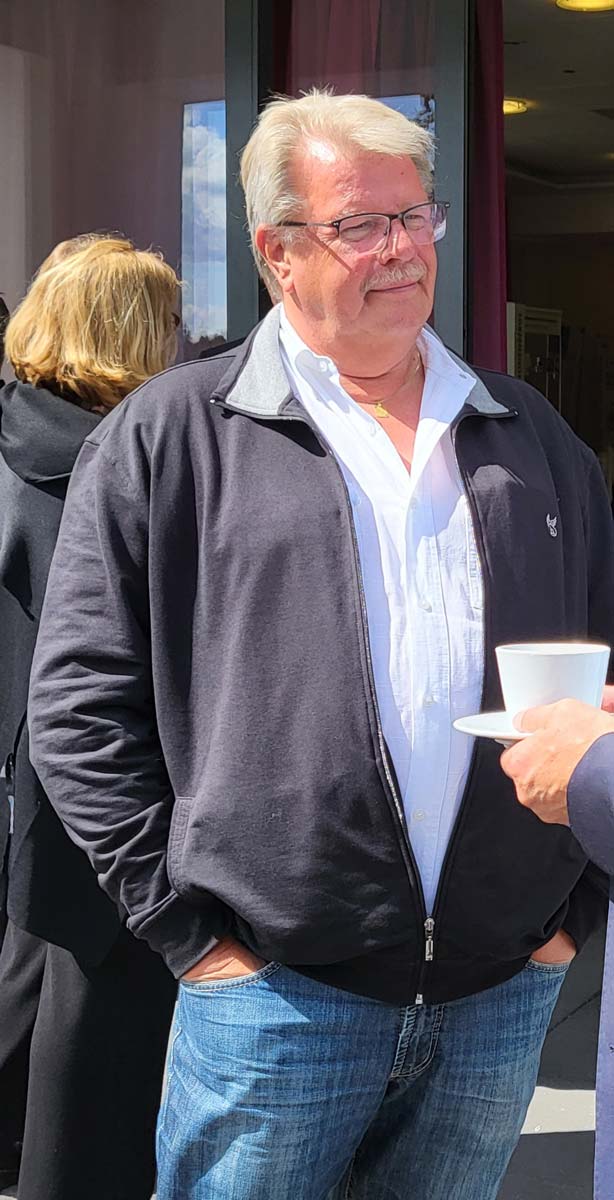
Carsten Henriksen, Schindler Deutschland (Germany) Management, summed up the Big 4 standards and legislation package with “The Machinery Ordinance — Impact on the Elevator Industry.” A review of the MD 2006/42/EC via a 12-week impact assessment study has been running since May 2019. Every EU citizen/company/association was allowed to participate. Many comments were received, which made a review necessary. As important results, he mentioned:
- A threshold between MD and Lift Directive (LD) at 0.15 m/s remains in place.
- Alignment of EHSR (health and safety requirements) between MD and LD
- Same level of safety through a conformity assessment as in LD
- Digital documentation
- Control — hold to run for open platforms/cars
- Digitalization, AI, IoT and cybersecurity when using the machines
After the first reading, it was decided to transform the Directive into an Ordinance. Numbering of sections and annexes were changed. Directive 2006/42/EC will be withdrawn 48 months after the date of entry into force of this Ordinance.
Technical Solutions for Daily Use and Special Applications Another five presentations went into technical detail on this topic. Andreas Hunscher, Boehnke + Partner, dealt with “Functional Safety (Funktionale Sicherheit FuSi) in Elevator Technology.” The following applies as a definition for FuSi: An automated process must remain safe even if failures occur, such as hardware/software/human faults or faulty dimensioning or environmental influences. Safety must be established in three stages:
- Inherent safety is when potential hazards are prevented by design.
- Thereafter, separating protective devices can be used, such as covers or shelters.
- User information on remaining residual risks should be prevented as much as possible by upstream measures.
In elevators, PESSRAL (Programmable Electronic Systems in Safety Related Applications for Lifts) are available as FuSi. Lessons can be learned from mechanical engineering for elevator construction, e.g., in the process of entering an area with hazardous movement. When entering the shaft pit, there is no FuSi so far, only instructions/notices. ISO EN 81xx-xx might adopt solutions from machine safety in other industries. Improving safety does not have to mean increasing costs.
Ludwig Semmler, Ziehl-Abegg, covered in 2019 Part 1 of his presentation on suspension means and drives becoming one system: Small drives are due to the more flexible suspension means, short shaft heads and shaft pits, and result in low-cost, compact drives. “Modern Elevator Drives Part 2” deals with the application and limitations of suspension means. Requirements from type examinations influence the design of drives and elevators: replacement maturity, maximum number of trips/bending cycles to replacement maturity, maximum years of operation, permitted operating temperature, torsion of suspension means, traction calculation, rope safety calculation, minimum diameters required, model and traction sheaves and deflection pulley material. The speaker covered three examples of type examinations with notes on handling. The type examination certificate also states whether a partial replacement of the drive unit is permissible in the case of modernization or whether a complete replacement is required. His conclusion: The use of the elevator determines the choice of suspension means. Steel ropes should be used for high-traffic installations. Plastic sheathed ropes and belts are suitable for installations with a lower intensity of use.
Dominik Herrmann, Stuttgart University, followed with “Procedures and Methods of Elastic Modulus Measurement on Wire and Fiber Ropes.” He defined the rope elastic modulus (REM). Values are determined via tensile tests, as they cannot be calculated. He described three common measurement methods. The result is plotted in curves. Permanent elongation leads to a higher REM after a few load steps. The biggest differences between the measurement methods are found in ease of use. The REM difference, on the other hand, is negligible: less than 1%. Correct load steps according to later applications are more important.
Boris Marjancevic, Fermator Deutschland (Germany), presented together with the associated company Sicor, “Modification Solutions for Elevator Doors — Modern and Cost-Efficient Approaches for Partial and Complete Modification of Doors for Cars and Landings.” Juergen Kral, Meiller Aufzugtüren (elevator doors), offered a direct comparison with another manufacturer in his presentation “Sustainable and Resource-Saving Modernization of Old Elevator Doors.” All speakers presented their company’s products in detail and named the principles and advantages for (partial) replacements.
People and Technology in Post-Coronavirus Times
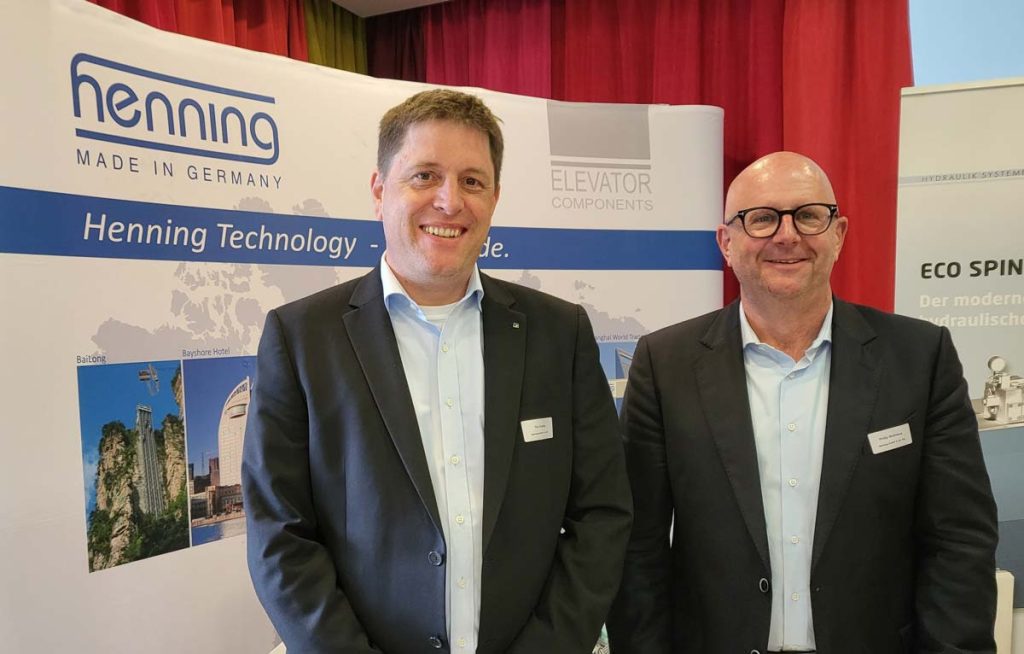
At the Schwelm Symposium, your author (USB) spoke with Tim Ebeling (TE) and Philip Molineus (PM), the two CEOs of Henning, the company that has been arranging the convention since 2003.
USB: After a two-year break, are you pleased that your event is being held again?
PM: Yes, very much. I wonder if maybe I’m a bit old-fashioned, but there’s no compensation for personal contact.
USB: What makes a conference valuable to you?
PM: There are two main aspects. From a technical point of view, when a webinar is going on, we all know that on the side you are checking this or that email, reading a text for a moment or quickly commenting on a draft. Concentration sinks. Of knowledge that you could absorb, only a fraction gets through to you.
USB: And the second aspect?
PM: This is about people themselves. People grow lonely in the home office. Before they start talking to their indoor plants, it’s much better to go to a conference or to the office. Telephoning doesn’t help, because people aren’t always available on call. Also, the “grapevine” and the “rumor mill” won’t work anymore. You don’t get to meet new people — not even new colleagues.
USB: How is that noticeable in a company?
PM: Work processes no longer run smoothly, because every now and then a link in the chain is missing or not closing at the moment. Knowledge is no longer being passed on. And when something eventually does go ahead, there is always a long delay because people don’t meet regularly, but perhaps only once a week. The additional effort of placing an extra call or sending an extra email is shied away from or forgotten in the day-to-day operations.
USB: Which parts of the company are particularly affected, Mr. Molineus?
PM: Sales — and, therefore, also me in person — are happy to be active again at a convention. Several customers can be groomed one after the other very effectively and efficiently in one place. I almost inevitably meet potential new customers during the coffee or lunch break, and even more so during the evening barbecue. Here, without having to look around much, I also find new people who, before the convention, I didn’t even know existed who could be potential customers. If I had to make these contacts online, the process would be much more complicated.
USB: Mr. Ebeling, as the engineer in the two-man top management team, you can certainly contribute a technical aspect to the pandemic break.
TE: Since the beginning of the coronavirus phase, electronic components have increasingly become a problem. Shipments are getting delayed. Parts are becoming significantly more expensive.
USB: Why?
TE: Lengthy production processes were repeatedly interrupted by lockdowns in various countries and had to be restarted. Some chip factories have burned down, unable to produce for the foreseeable future. Customers are also buying supplies in far too large quantities that they cannot consume quickly. Larger batches are produced to meet this demand, which takes longer. The next production of a batch is postponed accordingly, and customers who have previously missed out wait longer and longer. These shortages subsequently lead to price increases.
USB: How does the Henning company — representative of many SMEs — deal with this?
TE: We are forced to change the design of existing products all over again to adapt. We work with the components that are currently available on the market at affordable prices. As human resources for such highly skilled work are limited, new developments are put on hold. Sales stagnation or even decline can be the result in the medium term. The company — and thus, of course, the German economy as a whole — grows more slowly.
USB: How do you adapt your processes accordingly?
TE: Before we develop a new product today, we check in advance which components are available. Only after physically holding them in our hands does the actual design process begin. This process, if necessary, already provides for alternative components so as to avoid single-source dependencies. The consequences are further postponements, with the previously described consequences involving sales and earnings. We are now less likely to be able to present something new at a conference or trade show.
USB: And the cost increases for parts?
TE: Unfortunately, even though we have exhausted all potential savings, we cannot avoid passing on price increases to our customers.
USB: Let’s look into the future.
TE: This “bubble” will burst. Unfortunately, at the moment, nobody knows when. If I had to guess, I would say the third or fourth quarter of 2023, without being able to provide any reliable evidence.
USB: What prompts you to make this statement?
TE: This kind of purchasing behavior has happened before, following the Fukushima accident. At some point, everyone has so many stocks lying around that the chips produced can no longer find buyers. The market is regulating itself, and thus, prices are normalizing.
USB: Let’s get back to the Schwelm Symposium. When will the elevator community meet here again?
PM: On June 19-20, 2023, which is a Monday and a Tuesday. It will be into the 19th round. We hope then, instead of just over 100 participants this time, to approach the higher numbers of pre-corona times.
Get more of Elevator World. Sign up for our free e-newsletter.








